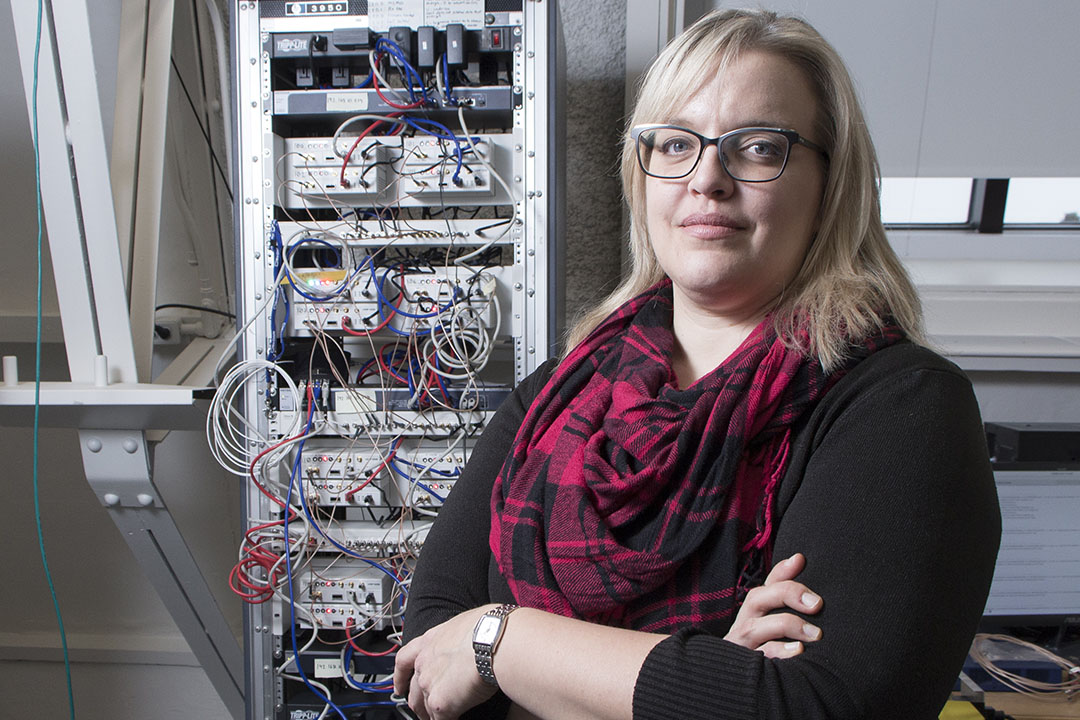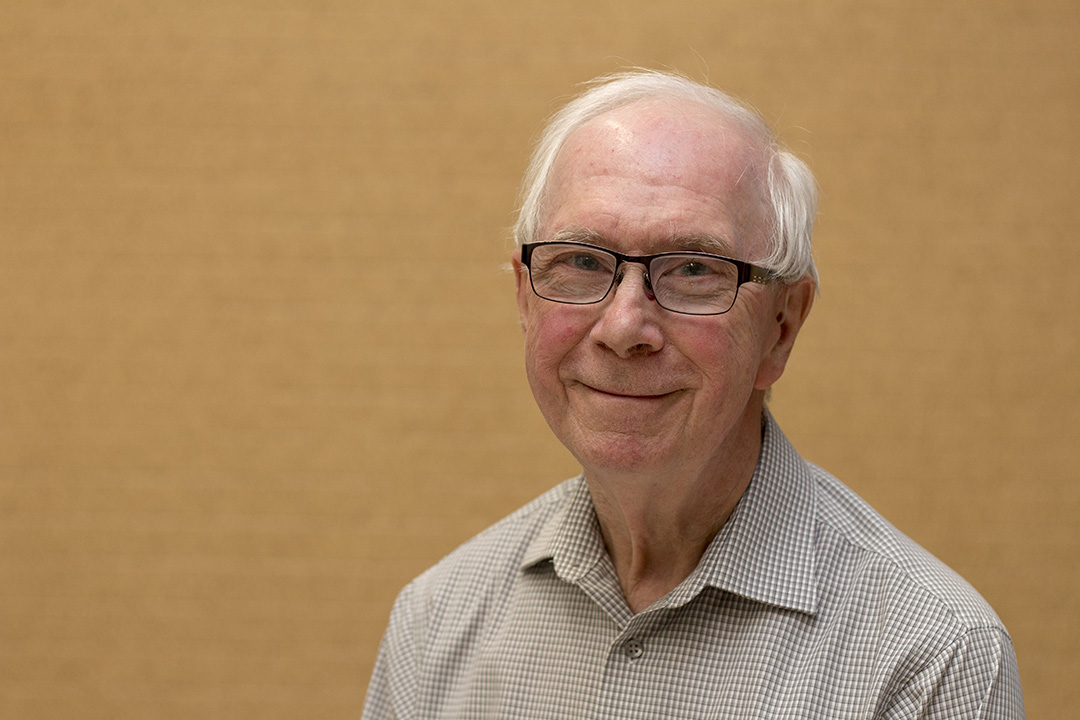SuperDARN Canada and the next 25 years
There is probably no other lead scientist of a national research facility who can make the claim Kathryn McWilliams can make: she built this place with her own two hands.
By Chris PutnamA picturesque sky over the Saskatoon SuperDARN radar site. (Photo: SuperDARN Canada)
“It’s kind of embarrassing, but yes,” said McWilliams, principal investigator of SuperDARN Canada and a professor in the College of Arts and Science’s Department of Physics and Engineering Physics.
McWilliams’ handprint can still be found embedded in one of the concrete tower bases at the Saskatoon SuperDARN site—proof of the summer she spent in 1992 “digging holes and pounding rebar into the dirt” for what would become the first SuperDARN Canada radar.
This fall marked 25 years since that radar was switched on and the international SuperDARN (Super Dual Auroral Radar Network) project launched. The University of Saskatchewan is headquarters to the Canadian contribution—one of three original partners in a collaboration that now includes 11 countries and three dozen radar sites around the globe.
McWilliams was a second-year U of S student when she and a few other physics and engineering physics undergraduates were hired by Professor George Sofko, the original principal investigator of SuperDARN Canada, to help construct the radar. She had no idea it would be the start of a career.
“I really enjoyed the work and found the research interesting, and kind of fell into the stream and ended up here,” she said.
McWilliams went on to do a master’s degree under Sofko’s supervision, completed her PhD at the University of Leicester working with a SuperDARN team in the U.K., and eventually took over from her mentor as lead of SuperDARN Canada.

She found herself involved in an exciting field of space research. For 25 years, SuperDARN has been at the forefront of the study of space weather, using radar to monitor conditions in the upper reaches of Earth’s atmosphere. Through more than 800 journal articles associated with the project, our understanding of the flow of charged particles high above our heads has been advanced.
The next 25 years should be just as interesting. The massive dataset built by SuperDARN has opened new doors for understanding space weather events.
“The more data we have, the more we can really dig into understanding the system, the physics and the chemistry behind what we observe,” said McWilliams.
Creating a forecasting model that can predict space weather events—especially severe magnetic storms that can damage infrastructure and threaten safety—remains the ultimate goal.
“We’re not in the forecasting business” just yet, said McWilliams. Currently, scientists can only predict space activity in the very short term, similar to Earth weather forecasting in the 1950s and ’60s.
A weekly space weather forecast isn’t likely anytime soon, but McWilliams said she expects the length and quality of forecasting to improve steadily in the coming years. “We’re building on it. We’re always seeing improvements.”

Some of that progress will be helped by new technology. SuperDARN Canada has plans to upgrade the electronics of its five radars in the next couple of years, drastically boosting the number of scans of the sky that can be done each minute.
“We’re trying to really improve the quality and quantity of our data,” said McWilliams.
SuperDARN researchers will explore other horizons as well. Space weather and Earth weather have mostly been studied separately in the past, said McWilliams, but there is increasing evidence of correlations between the two. Scientists at the U of S and elsewhere are exploring how solar and space activity might influence weather on Earth, potentially adding new layers to our understanding of weather and climate.
“There are some tantalizing connections that we don’t totally understand,” said McWilliams.

